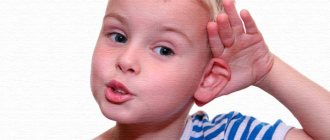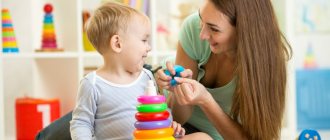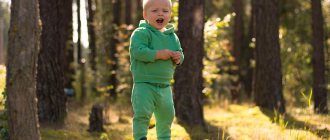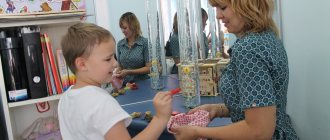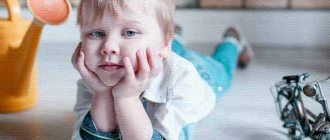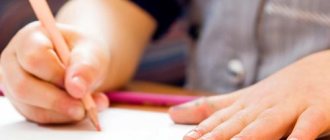Features of the development of boys at 6 months
Boys, as mentioned, may be a little slower to learn skills at an early age. This is due to the fact that girls develop a little faster in childhood. If the baby is not crawling yet, but, for example, gets on all fours, this is normal. As for height and weight parameters, boys are on average larger, their height ranges from 63.3 to 71.9 cm, weight – from 6.4 to 9.8 kg. It is important that the ratio is healthy and optimal: larger children weigh more. Children at this age are plump and well-fed, this is completely normal.
Motor activity of a child at 6 months
At six months, the baby demonstrates not only improved speech and cognitive skills, but also more confident movements. The back muscles and bones are strengthened, the baby can roll over from back to stomach and back. Tries to independently take a sitting position and stay in it.
True, the baby may not yet be able to sit up on his own; his parents help him with this. The child will also not be able to sit for a long time and after some time, most likely, will move to a lying position.
Fine motor skills.
Parents quickly notice that the child’s ability to handle surrounding objects improves. He moves his arms much more freely and more actively, and uses his fingers much better. For example, a baby can easily pick up a fallen toy or transfer it from one hand to another. Now he grabs objects not with his whole palm, but with his fingers, which have become much more mobile: the child can manipulate them. A number of special exercises are used to develop fine motor skills.
Trying to get back on my feet.
Each child experiences this process differently. Someone can simply sit down if they find something to grab onto, for example, their mother’s finger. Another may attempt to stand up while holding onto support. Most children at this age can stand on their feet for a short time if held, but after a while they get tired and sit back down. Some children jump when held under their arms. A child at this age will not be able to walk even with support, but some move their legs, trying to take small steps.
Active gestures
. At the age of six months, a child quickly masters sign language and, with its help, shows his parents what he likes and what he wants. If the baby wants to get out of the crib, he reaches out to mom or dad; if he wants a toy, he points at it with his hand. By improving fine motor skills, gestures become more accurate and understandable. The child copies some of them from adults, so educational games with the baby will help him better learn to gesture. The child tries to control his hands, even if he is sitting: he no longer needs to use his hands to maintain balance.
Attempts to move.
The baby is not just trying to get up, he is actively trying to move. Many children are already crawling at 6 months, some on their bellies, others on all fours. Even if crawling is not possible, the child will actively roll over from his stomach to his back and back, trying to move from his place. It is important to remember that around this age the child begins to crawl, and try to prepare the apartment for his movements in advance. Young children are active, so you need to monitor them carefully to avoid injury. It’s still too early for them to walk at this age, but many are already crawling. Even those who have not yet learned are already trying to crawl.
Educational games with a six month old baby
In order for the baby to develop faster and more actively, he needs help with this. Even eminent authors say that children who were taught in childhood master knowledge better in the future. Research says [2] that they are even more likely to get a good education. Of course, there is no need to try too hard and try to teach math to a six-month-old child. It is enough to develop those skills that the baby is already trying to demonstrate: helping him learn to crawl and sit up, working with fine motor skills and the perception of new information.
Tactile toys.
At six months, a child develops an interest in new textures and surfaces. He is delighted that there is something hard, rough, slippery or fluffy in the world. To prevent your baby from touching objects that he shouldn’t use, you can purchase tactile toys that feel different to the touch. The child will be happy, and parents will be able to tell him about the name of this or that sensation, using the example of a toy. The more variety there is in a child’s life, the faster he will learn new things.
New sounds.
The same principle works here: the more different sounds the child hears, the better. Of course, you shouldn't scare him. It’s better to show and tell him how different things sound: water is noisy, a cat meows, a car is honking. The child is actively interested in this and tries to imitate sounds coming from outside. It is at this age that the way he will speak in the future is laid down. Despite the fact that six-month-old children cannot speak, representatives of different nations can identify children from their linguistic environment by just walking [3].
New shapes and colors.
You should not surround your baby with only one color: blue if it is a boy, or pink if it is a girl. On the contrary, a child should see many different shades around him in order to quickly learn to distinguish colors from each other. The variety of information that comes to the baby determines the speed of his learning and the amount of knowledge. You can buy special toys, coloring books or picture books - the child will be delighted.
Conversations with a child.
You need to talk to the baby. Already at this age, he perfectly distinguishes intonations and can distinguish the speech of his parents from someone else’s. Do not shout or swear in front of the baby: this will scare or alert him. Instead, it is recommended to talk to the child: on a walk and at home, describe and name the objects he is looking at, point to various things and give them names. The more the baby hears live speech, the more extensive his vocabulary. This does not work with tape recordings: the conversation must be live. Try to speak in a soft tone, pronouncing sounds clearly, so that it is easier for your child to repeat them.
Features of the development of girls at 6 months
Physiologically, girls develop a little faster than boys, so at six months they are somewhat more likely to be able to sit up and crawl. True, it’s still not worth putting the baby out if she can’t sit down herself. In terms of other differences, girls may be slightly smaller and lighter than boys. This is how sexual dimorphism begins to appear in childhood. The WHO norm for a girl's height is 61.2-70.3 cm, for weight - from 5.7 to 9.3 kg.
Features of child development at 6 months
A six-month-old baby is on average 65–67 centimeters tall and weighs 7.2–7.9 kg. Boys at this age are already becoming slightly larger than girls: they usually weigh more and are taller. Genetics also plays a role: a child’s size may also depend on it. From the age of 6 months, growth slows down slightly compared to the incredibly fast pace of development until six months.
Hearing.
A six-month-old baby is on average 65–67 centimeters tall and weighs 7.2–7.9 kg. Boys at this age may be slightly larger than girls: they may weigh more and be slightly taller. Genetics also plays a role: a child’s size may also depend on it. From the age of 6 months, growth slows down slightly compared to the incredibly rapid pace of development until six months.
Vision.
By the age of six months, the baby’s vision improves significantly. He begins to see surrounding objects more clearly and clearly, and follows them with his eyes. This also affects the movements: they become more accurate, since the baby clearly sees what he is doing. Turning your gaze becomes faster, and your reaction improves.
Speech skills.
At six months the baby is already trying to speak, although his speech is not yet human-like: he begins to babble, makes incoherent sounds, but is quite active. Typically, a six month old baby will already be pronouncing syllables such as "ma" or "ba". Speech develops better if you talk to your baby more often: he remembers how adults talk and tries to reproduce it, imitates their pronunciation. At six months, articulation improves, sounds become clearer and more varied, and the child himself becomes interested in speech: he begins to babble, even when alone with himself. At this age, the baby can imitate the sounds that animals make, such as barking or meowing.
Dream.
Parents can finally breathe easy: their six-month-old baby sleeps more soundly and is able to sleep through the night without waking up. A child's sleep at this age lasts up to 14-16 hours a day, 8-10 of which occur at night. The baby also falls asleep several times during the day and sleeps for up to 2-3 hours. Parents may note that in the fresh air, for example during a walk, the child sleeps more calmly and soundly. It’s worth going for walks with him twice a day, if weather conditions and well-being allow it. A sleep schedule is very important for babies at this age: try to put your baby to bed at the same time every day.
Psycho-emotional development of a child at 6 months
Watching how a baby’s psyche develops is especially fascinating. A six-month-old child shows emotions: he may frown or laugh, and tries to copy the facial expressions of adults. He begins to understand the emotions of his parents and reacts to them according to the situation, and his own voice changes in intonation depending on his needs and mood. The kid is aware of cause-and-effect relationships: if you hit the bell, it will ring. A six-month-old child recognizes his parents and joyfully reaches out to them, but strangers often frighten and confuse him, keep this in mind. The baby recognizes his name, the names of some familiar objects, and can look or point at them if he names this object. At this age, it is a completely normal part of development to put everything in the mouth, including your own feet and toys. The child becomes very tactile, he is interested in the differences between the textures of the surfaces of objects, so it is recommended to have different toys: smooth, rough, fluffy.
